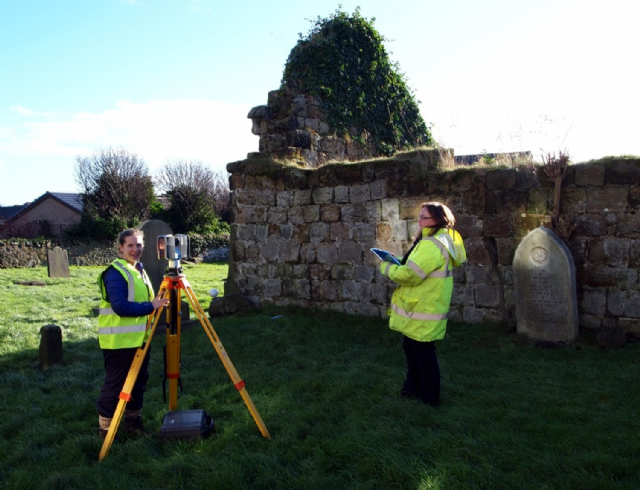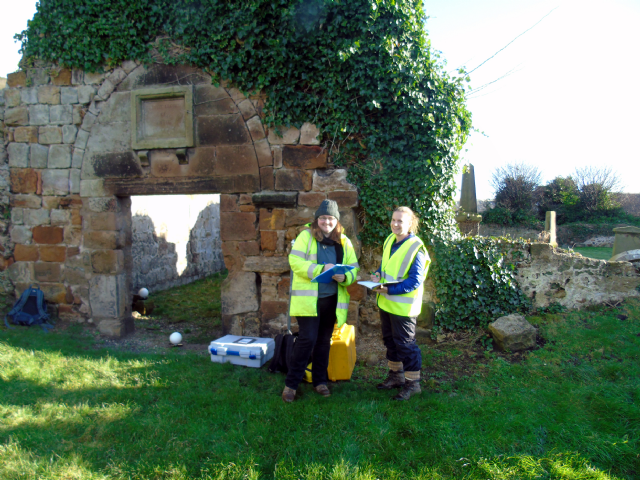Recording and Scanning
The foundations of systematic archaeological recording through measuring and drawing date to the later 18th century, much of this was carried out by antiquarian societies such as the Society of Antiquaries of Scotland. It was realised that a greater understanding was needed of the surviving monuments especially during the late 18th and nineteenth century when the country was going through great change and many of the surviving sites were under threat. All of this work was done by hand and much skill was involved. Photography was of great help in recording general views but still skilled drawing and measuring was needed.

Diana Sproat & Gemma Hudson start the laser survey.

February 2016, Digital Laser Scanning starts
Recording Site
Recording involves visiting the site on several occasions to understand what is there. Recording often includes the study of photographs, maps and other archive documents as well as gathering local information about the area and the people who lived there. The information gathered will be used to develop a better understanding of the Kirkton Church and its place in the local community. It will assist in interpretation, education and access, both local and national. The information gathered will be lodged with Historic Scotland and with Fife Council. This is the first opportunity of providing a full recording of the site and it is hoped that this will aid in its future preservation and maintenance.

